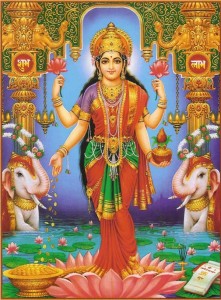What is Deepavali?
Deepavali, which is also known as Diwali, is a 5 day Hindu festival that usually falls between the months of October and November. It is one of the most important festivals of the Hindu calendar and is celebrated by Hindus all around the world. The name is derived from the small clay oil lamps that are lit on Deepavali night which are called “deepa’s”. These lamps are kept lit over night to welcome the Goddess Letchumi, the Godness of Wealth and Prosperity. The name means “the festival of lights” and also signifies the triumph of good over evil, light over dark.
The 5 days of Deepavali
Each of the 5 days of the festival has its’ own significance and legend.
The first day of Deepavali is known as Dhanteras. It signifies the day Lord Dhanwantari came out of the ocean with Ayurvedic, the ancient art of medicine and body-mind connection, for mankind. This day marks the beginning of Deepawali celebrations. On this first day at sunset, Hindus offer a lighted deepa with sweets as an offering to Yama Raj, the Lord of Death and ask for protection from an untimely death.
The second day of the festival is known as Naraka Chaturdasi. It is also the eve of the day that is celebrated as the actual day of Deepavali. This day also signifies the day Lord Krishna destroyed the demon Narakasur and made the world free from fear. On this day, Hindus bathe with oil to relax so that Deepavali can be celebrated with vigor.
The third day is the day that is celebrated as the actual day of Deepavali. It is also known as Letchumi Puja. On this day, Hindus go to temple to give praise and worship to the Goddess Letchumi. It also signifies the triumph of good over evil and light over darkness. This day also signifies the return of Lord Rama returned to Ayodhya, having successfully rescued Sita and defeated the demon, Ravana.
The Godess Letchumi
The Govardhana Puja is performed on the fourth day of Deepavali. Legend has it that Lord Krishna taught the people to worship the ‘Supreme Controller of Nature’ or God. Specifically Govardhan as Govardhan is a manifestation of Krishna. This worship began over 5000 years ago and carries on til this present date.
The final day of Deepavali is called Bhratri Dooj and it is a day dedicated to sisters. It is believe that on this day in the Vedic era, Yama Raj, the Lord of Death visited his sister Yamuna. He gave her the power to cleanse all those who visit her on this day from their sins. From then on, brothers visit their sisters on that day and in India, many will bathe in the Yamana river. This also marks the end of the Deepavali celebrations.
